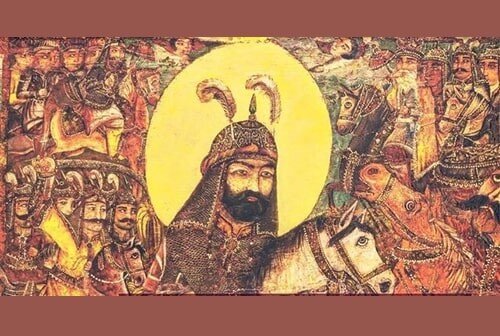Historic Golestan Palace hosts special Muharram events

TEHRAN – Golestan Palace, which is Tehran’s sole World Heritage site, has unveiled an array of cultural and religious programs for Muharram, including a continuation of the Ashura curtain restoration project and staging numerous traditional ceremonies.
“During the first ten days of the lunar month, religious rituals are performed in the private courtyard of the Emarat-e Badgir,” said Golestan Palace’s director in an interview with CHTN.
Afarin Emami underscored that Golestan Palace’s grounds would host a variety of themed events, including Ney-navazi (traditional reed flute playing), Dammam drumming, Ta’zieh (traditional Persian theatre), storytelling, curtain reading, and mourning ceremonies by different ethnic groups.
She highlighted the installation of Ashura elements such as banners, Alams (ceremonial standards), and Nakhl (a symbolic wooden structure) within the palace grounds.
Additionally, anthropological programs will be featured, including the introduction of the Ashura Hall, along with religious discussions and lectures, according to the director.
Emami also announced the unveiling of the book “Darvishi Curtains of Golestan Palace” during the first ten days of Muharram.
Continuing the successful project initiated two years ago, she further explained, that the restoration of another Darvishi curtain will commence under the supervision of the related cultural heritage departments.
According to the organizers, Golestan Palace’s Muharram programs aim to preserve and showcase Iran’s rich cultural and religious heritage, offering visitors a unique glimpse into traditional ceremonies.
Pardeh-khani (literally, “reading aloud from the screen/from the curtain”), is one of those skills through which storytellers give life to illustrations on a large canvas.
The time-honored dramatic form of art is still occasionally performed across the country to commemorate the slaying of Imam Hussein (AS), grandson of the Prophet Mohammed (PBUH), in the battle of Karbala in 680 CE.
Pardeh-khani is a type of storytelling combined with a laudation that is always accompanied by pictures. It is probably acting like an educational- entertainment medium to form a kind of stream of consciousness for audiences to virtually travel to different times and places.
There are illustrations on a large canvas named parde, and a person called pardekhan (storyteller or minstrel) stands before the crowd, points to an illustration with a stick, and narrates its story. This was a kind of street art and people, mostly children and teenagers, would gather in a square where pardekhan would tell his stories.
XF/AM
Leave a Comment